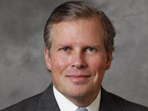Our strategy
Any important initiative needs support from our leaders. Leaders define the change imperative for diversity and inclusion, set the tone for what is important, and make the business case. They set the example for others to follow and behave in ways that reflect and reinforce an inclusive and meritocratic environment.
Change starts with new insights. To become a more inclusive culture, we examine how our views shape mindset and behaviours - both conscious and unconscious. We understand the positive link between an inclusive culture, improved employee engagement, innovation, and ultimately better business results.
Our culture is the foundation of how things get done. D&I is integral to our culture and as such, employee policies, procedures and systems will reflect this commitment. As a meritocracy, Chubb strives to recruit, develop and retain the best talent.
Examining our workforce demographics provides a necessary benchmark. Establishing qualitative and quantitative measures allows us to assess progress, hold ourselves accountable and continuously improve. This includes sharing outcomes and driving accountability with the same discipline and rigor as we approach any problem solving.
Communication and messaging reinforces our commitment. We aim to have leaders articulate the desired culture clearly, consistently and repeatedly. We plan to showcase successes, stories, best practices, accomplishments, and insights across communication channels.
Our network
We have a number of networks within the UK and Ireland focused on specific areas within Diversity and Inclusion, sponsored by a member of our Executive team. Our aim is to broaden the reach of these networks to more locations in the near future.

We are committed to creating an evident change which promotes an acceptance and openness about ability and mental wellness within the organisation.
"We are pleased to be the executive sponsors of Abilities & Wellbeing Network. Our aim is to build a culture that supports and recognises peoples' individuality which we believe is the key to the success of our business. As a network of our employees we will focus on promoting acceptance and openness surrounding ability and mental wellnes within Chubb."
Executive sponsors:
Sara Mitchell, Division President UK & Ireland & Richard Copping, Head of Compliance



Chubb is a multinational company, and our staff live and work in a multicultural world. In order to attract, retain and develop the best talent, we want Chubb to be a place where all our staff can bring their ‘whole self’ to work and feel comfortable about expressing their cultural heritage in an environment that is respectful of diversity and which positively celebrates and values the variety of backgrounds we all have.
“Chubb is a truly international company, and we work with clients, partners and colleagues from across the globe. An understanding and appreciation of other cultures is a tremendous asset in ensuring that those interactions are both positive and effective. Whether you are sorting out a client service issue or helping a new colleague settle into an unfamiliar environment, being aware of any cultural factors that might be involved can certainly ease the process. As someone who has had a very international career, I’m very pleased indeed to be the executive sponsor of the Cultural Awareness network: I truly believe that increasing understanding in this area not only makes great business sense for a company like Chubb, but is personally enriching and, not least, fun!”
Executive sponsor:
Giles Ward, Regional President Eurasia & Africa


The Gender Equality Network (GEN) provides opportunities for networking, education and development of business capabilities for all employees, with the aim of driving positive change towards the goal of gender equality within Chubb and the wider insurance industry.
Executive sponsors:
Julie Chalmers, Senior Vice President Claims Director, Europe & Annmarie Camp, Head of High Net Worth, COG Europe



The Parents and Carers Network aims to further develop a supportive culture to enable parents and carers to successfully integrate a fulfilling working life and family responsibilities.
“We are honoured to be the Executive Sponsors of the Parents & Carers network. It is an area we both feel passionate about because we understand the challenges when trying to juggle a successful work-life balance. As a network, our aim is to provide support and guidance to ensure we have an inclusive environment where our employees are empowered to perform to the best of their ability, both at work and at home. We believe this is crucial and will contribute to the future success of the business.”
Executive sponsors:
David Furby, Regional President European Group & Miriam Connole, Senior Vice President, Chief Finance Officer



The Chubb Pride UKI group brings together our LGBT employees and their supporters to provide opportunities for networking and support with the aim of driving positive change to making Chubb a fully inclusive place for our LGBT community.
“Creating a work environment that is genuinely inclusive, safe and welcoming allows all of our employees to have a sense of pride in who they are, who they work for and to bring their whole self to work each day. Having a strong LGBT support network not only helps our employees, it also helps us attract and retain customers, build products that are relevant to different groups and help us understand how to support those groups. Chubb Pride UKI is open to everyone, having LGBT and allies as part of the group sends a message of strength and underlines that we are in this together.”
Executive sponsors:
Kate Richards, Senior Vice President, Human Resources, Europe, Eurasia and Africa & Ashley Mullins, Senior Vice President & General Counsel, Europe, Eurasia and Africa



Through the work of the Social Mobility network, we are developing and promoting a culture of inclusion and equality, where access to internal and external opportunities at Chubb are open to all, regardless of background.
“At Chubb we have a strong network focused on Social Mobility, powered by some passionate people. The idea really is to access a wide range of diverse talent and match them to the skillsets we need at Chubb, to drive our organisation forward. We believe equality provides opportunity.”
Executive sponsors:
Neal Daniel, Director of Business Change & Reengineering & Emma Bartolo, Corporate Regional Manger, London


Gender pay gap report
Our aim is to provide a work environment that fosters and encourages a high level of contribution from all employees and we welcome the opportunity to report our gender pay gap. We have put a number of actions in place towards building a more gender-balanced workplace and this first report will act as our benchmark when measuring future progress.
Chubb UK Gender Pay Gap Report 2019
The gender pay gap measures the difference between the mean and median male pay and the mean and median female pay as a proportion of the mean and median male pay between all women and all men at Chubb in the UK.
We are pleased to report an improvement in our gender pay gap numbers for 2019.
Chubb Services UK Limited
Hourly Pay Gap |
Mean |
32.7% |
Median |
30.6% |
|
% of men : women in |
Upper hourly pay quartile |
76% : 24% |
Upper middle hourly pay quartile |
67% : 33% |
|
Lower middle hourly pay quartile |
52% : 48% |
|
Lower hourly pay quartile |
43% : 57% |
|
12 Month Bonus Gap |
Mean |
63.5% |
Median |
50.7% |
|
% of employees receiving bonus (% men : women) |
85.1% : 80.3% |
Information included in the calculation
The gender pay calculation includes base pay, any allowances (e.g. a car allowance) and pay for leave (e.g. maternity or paternity). It also includes stock as part of the bonus calculation. The calculation doesn’t include any overtime, redundancy and termination payments or non-cash benefits. The calculation is based on employee data at 5 April 2019.
The difference between gender pay gap reporting and equal pay
Equal pay deals with the pay differences between men and women who carry out the same jobs, similar jobs or work of equal value. It is unlawful to pay people unequally on the basis of their gender. The gender pay gap report shows the differences in pay between all men and women in a workforce. If a workforce has a particularly high gender pay gap, there may be a number of reasons, for example there may be a lack of female representation at a senior level.
I confirm that the data reported above is accurate.
David Furby
Regional President, Europe
Contact us
Louisa Lombardo
Head of Diversity and Inclusion, Europe, Eurasia and Africa
E: louisa.lombardo@chubb.com

